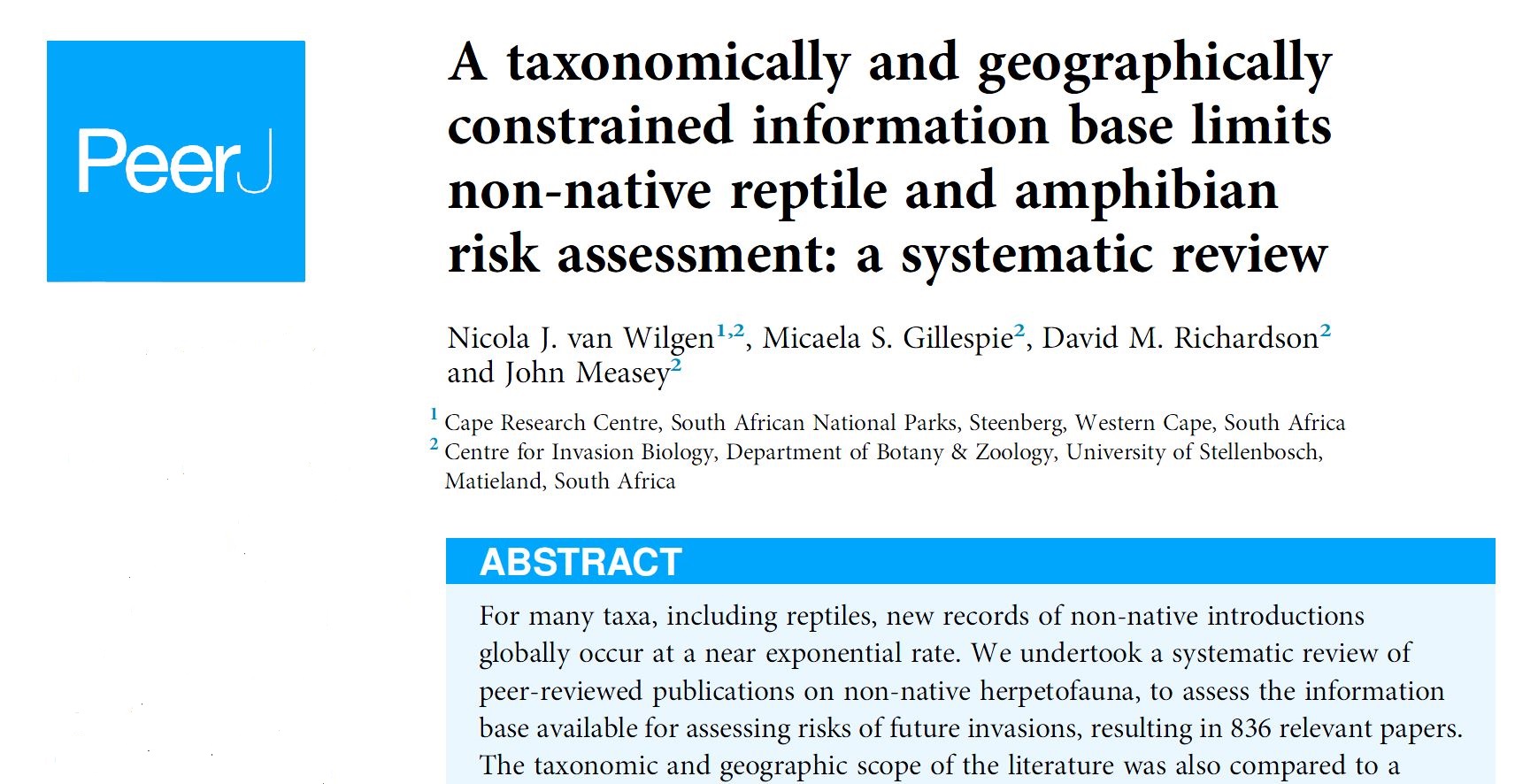A great new systematic review on invasive herp literature tells us that we have a biased information base
Today we're publishing a great new study that collects all of the literature on invasive reptiles and amphibians and asks what's out there, and how will it help us with risk analysis?
Building a comprehensive view of risk analysis for invasive and potentially invasive species requires scientific studies that provide a basis for the assessments. National assessments have suggested that studies are inadequate, but no systematic assessment of literature for any group has been undertaken. In a new paper led by Nicola van Wilgen (of the Cape Research Centre, SANParks, and a CIB associate), the authors trawled literature associated with alien reptiles and amphibians. They found 836 papers that cover a vast 1116 species of herpetofauna that were alien to the countries where they were studied, but 95% of these species had <12 studies. Most of this had a focus on frogs, and especially cane toads in Australia, although we know very little of what cane toads do in other countries. This is significant as although we can do a good job of assessing the risk of cane toads in Australia, we have a poor basis for knowing what happens elsewhere.
Most of the herpetofaunal literature (~50%) as assessed the impacts that alien species have on the environment, with very little information on trade (~2%), which is considered to be of prime importance for new invasions. The world is also uneven when it comes to research on invasive reptiles and amphibians. One hotspot is Florida, but there are plenty more areas with very little information, including China. This study provides an insight into the way in which scientists still need to gather much more information on alien species so that we can make meaningful assessments on their future risk.
Other groups, like crocodiles and turtles, are much better documented relative to the total number of species in the group. This is mostly because there are very few species in the group and so the ones that have been studied make up a high proportion.
There's lots more interesting stats and discussion, so please read the paper and see what you think!
Van Wilgen, N.J., Gillespie, M.S., Richardson, D.M. & Measey, J. (2018) A taxonomically and geographically constrained information base limits non-native reptile and amphibian risk assessment: a systematic review. PeerJ 10.7717/peerj.5850


